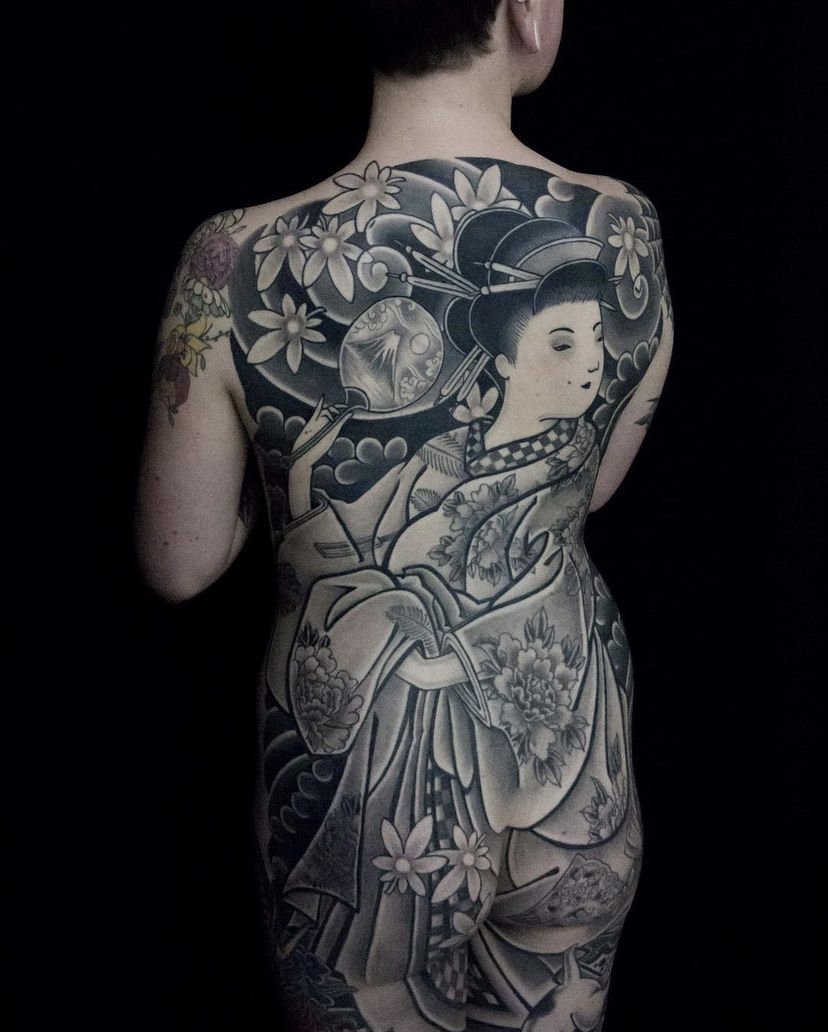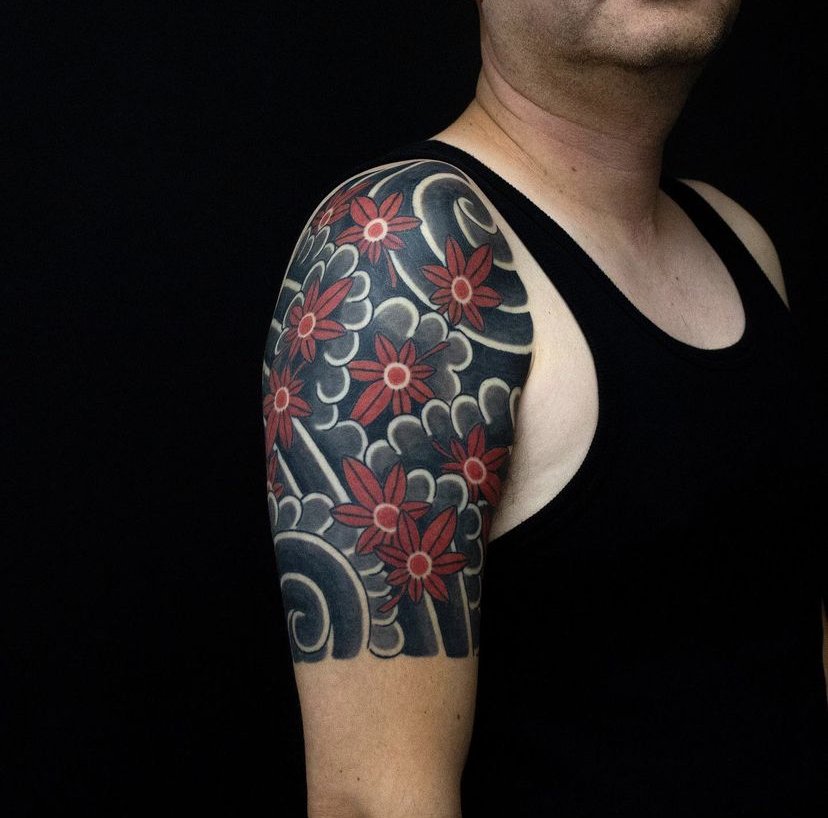Traditional Japanese tattooing is typically created with three main elements, Background or “Gakubori”, the main subject matter, and an often overlooked complimentary floral element.
Floral elements are an important element of Traditional Japanese tattooing. They have a variety of meanings in Japanese culture, and when paired correctly with the right subject matter, they can create a harmonious tattoo rich with history and tradition.
Maple leaves or “momiji”, were lauded by Japanese poets as early as the eighth century and were second only to sakura in poetic importance for their emphasis once again on the beauty of the passage of time and the transient nature of life itself. Before Japan slips into grey, white and brown winters, autumn is the last chance for a burst of colour as the red maple leaves fall from the trees. In Traditional Japanese tattooing maple leaves are incredibly flexible and can be depicted with a range of motifs, including various animals, koi, heroes and deities.





